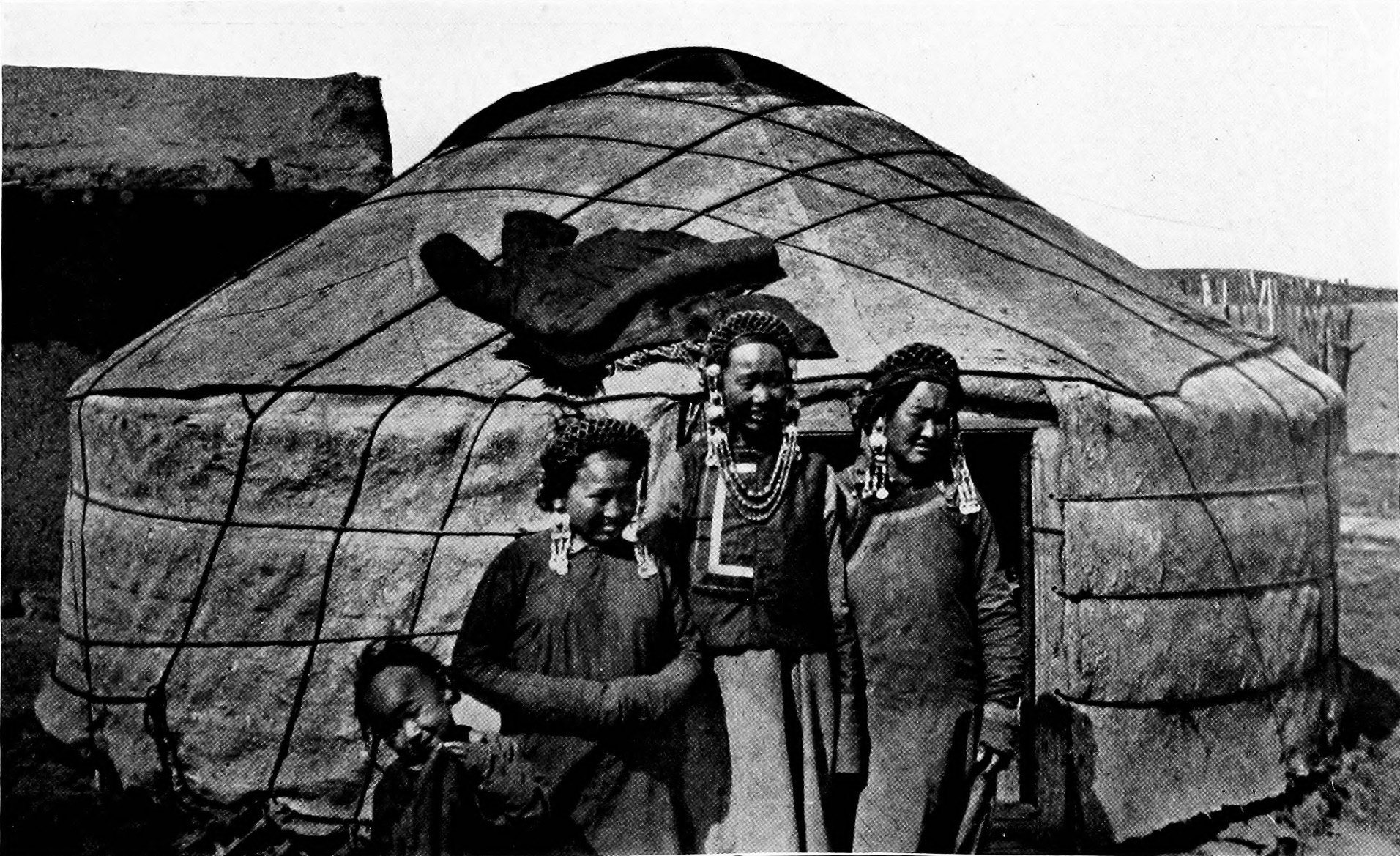|
Quangang
Quangang (; Min Nan: Chôan-káng) is a district of Quanzhou, Fujian province, People's Republic of China. Before 1996 it was part of Hui'an County. In 2000, it separated itself from Hui'an, and was renamed Quangang. The population is 354,296 (2020 census). The majority is Han, with some minority population, e.g. Hui and Mongol. The post code is 362114. The district government locates in Shanyao street. Establishment Administration The district is divided into seven town governments: * Nanpu () * Qianhuang () * [...More Info...] [...Related Items...] OR: [Wikipedia] [Google] [Baidu] |
Quanzhou
Quanzhou is a prefecture-level city, prefecture-level port city on the north bank of the Jin River, beside the Taiwan Strait in southern Fujian, China, People's Republic of China. It is Fujian's largest most populous metropolitan region, with an area of and a population of 8,782,285 as of the 2020 Chinese census, 2020 census. Its City proper, built-up area is home to 6,669,711 inhabitants, encompassing the Licheng District, Quanzhou, Licheng, Fengze District, Fengze, and Luojiang District, Quanzhou, Luojiang district (PRC), urban districts; Jinjiang, Fujian, Jinjiang, Nan'an, Fujian, Nan'an, and Shishi, Fujian, Shishi County-level city, cities; Hui'an county (PRC), County; and the Quanzhou District for Taiwanese Investment. Quanzhou was China's 12th-largest extended metropolitan area in 2010. Quanzhou was China's major port for foreign traders, who knew it as Zaiton, during the 11th through 14th centuries. It was visited by both Marco Polo and Ibn Battuta; both travelers pr ... [...More Info...] [...Related Items...] OR: [Wikipedia] [Google] [Baidu] |
Fujian Quangang Carbon Nine Leakage Event
Fujian Quangang Carbon 9 Leakage Event is a carbon nine leakage event that occurred in Quangang District, Fujian Province of China. A polyunsaturated aliphatic hydrocarbon In organic chemistry, a hydrocarbon is an organic compound consisting entirely of hydrogen and carbon. Hydrocarbons are examples of group 14 hydrides. Hydrocarbons are generally colourless and Hydrophobe, hydrophobic; their odor is usually fain ... mixture (called "Pyrolysed Carbon Nine" in petrochemical industry) leaked while Donggang Petrochemical Industry Co., Ltd. was loading oil at about 1 a.m. on November 4, 2018. History On November 4, 2018, Fujian Donggang Petrochemical Industry Co., Ltd. carried out oil loading and unloading. However, the hose flange gaskets of the tanker were damaged due to aging, resulting in carbon nine leaking into the environment. The company immediately invoked its emergency plan. According to Quangang District Environmental Protection Bureau, 6.97 tons of carbon nine escap ... [...More Info...] [...Related Items...] OR: [Wikipedia] [Google] [Baidu] |
Qianhuang, Fujian
Qianhuang () is a town in Quangang District, Quanzhou, Fujian, China China, officially the People's Republic of China (PRC), is a country in East Asia. With population of China, a population exceeding 1.4 billion, it is the list of countries by population (United Nations), second-most populous country after .... , it has 13 villages under its administration. References Township-level divisions of Fujian Quanzhou {{Fujian-geo-stub ... [...More Info...] [...Related Items...] OR: [Wikipedia] [Google] [Baidu] |
Tuling Town
Tuling () is a town in the Quangang District of Fujian's Quanzhou Municipal Region. Administration The town executive, Chinese Communist Party sub-branch and public security bureau sub-station (''paichusuo'') are in Tuling Village. The town administers 21 Village committees A village is a human settlement or community, larger than a hamlet but smaller than a town with a population typically ranging from a few hundred to a few thousand. Although villages are often located in rural areas, the term urban village ...: * Tuling Village () * Xiuxi Village () * Xitou Village () * Baitong Village () * Qingmei Village () * Xialu Village () * Shishang Village () * Wenyang Village () * Lupu Village () * Song Yuan Village () * Xiaoba Village () * Qian'ou Village () * Lukou Village () * Qiuhou Village () * Yiban Village () * Wushe Village () * Xixi Village () * Tuxing Village () * Zhangjiao Village () * Zhaihou Village () * Huangtian Village () Notes and references Quanzhou ... [...More Info...] [...Related Items...] OR: [Wikipedia] [Google] [Baidu] |
Fengwei Town
Fengwei () is a town in the Quangang District of Quanzhou City, Fujian Fujian is a provinces of China, province in East China, southeastern China. Fujian is bordered by Zhejiang to the north, Jiangxi to the west, Guangdong to the south, and the Taiwan Strait to the east. Its capital is Fuzhou and its largest prefe ..., China. It is situated on a peninsula in Meizhou Bay, jutting southeast toward the bay's entrance. The town oversees eight villages: * Chengfeng Village () * Chengping Village () * Qianting Village () * Zhengrong Village () * Guocuo Village() * Shanglou Village () * Lianyan Village () * Village () References {{coord, 25.1177, 118.9501, display=title Quanzhou ...[...More Info...] [...Related Items...] OR: [Wikipedia] [Google] [Baidu] |
Nanpu Town
Nanpu () is a town in the Quangang District of Quanzhou municipality, Fujian. Administration The town executive, CPC sub-branch and PSB sub-station (''paichusuo'', 派出所) are seated in Liucuo. The town administers 15 village committees A village is a human settlement or community, larger than a hamlet but smaller than a town with a population typically ranging from a few hundred to a few thousand. Although villages are often located in rural areas, the term urban village ...: * Liucuo () * Shicuo () * Qiucuo () * Kecuo () * Xiaocuo () * Nanpu () * () * () * () * () * () * () * () * () * () Notes and references {{coord, 25.1902, N, 118.9107, E, source:wikidata, display=title Quanzhou ... [...More Info...] [...Related Items...] OR: [Wikipedia] [Google] [Baidu] |
Mongols In China
Mongols in China, also known as Mongolian Chinese or Chinese Mongols, are ethnic Mongols who live in China. They are one of the List of ethnic groups in China#Ethnic groups recognized by the People's Republic of China, 56 ethnic groups recognized by the Chinese government. As of 2020, there are 6,290,204 Mongols in China, a 0.45% increase from the 2010 national census. Most of them live in Inner Mongolia, Northeast China, Xinjiang and Qinghai. The Mongol population in China is nearly twice as much as that of the sovereign state of Mongolia. Distribution The Mongols in China are divided between autonomous regions and provinces as follows: * 68.72%: Inner Mongolia Autonomous Region * 11.52%: Liaoning Province * 2.96%: Jilin Province * 2.92%: Hebei Province * 2.58%: Xinjiang Uyghur Autonomous Region * 2.43%: Heilongjiang Province * 1.48%: Qinghai Province * 1.41%: Henan Province * 5.98%: Rest of PRC Besides the Inner Mongolia autonomous region, there are other Mongol autonomo ... [...More Info...] [...Related Items...] OR: [Wikipedia] [Google] [Baidu] |
Shanyao Steet
''Dioscorea polystachya'' or Chinese yam ( zh, s=山药, t=山藥), also called cinnamon-vine, is a species of flowering plant in the yam family. It is sometimes called Chinese potato or by its Korean name ''ma''. It is also called huaishan in Mandarin and wàaih sāan in Cantonese. It is a perennial climbing vine, native to East Asia. The edible tubers are cultivated largely in East Asia and sometimes used in alternative medicine. This species of yam is unique as the tubers can be eaten raw. Range This plant grows throughout East Asia. It is believed to have been introduced to Japan in the 17th century or earlier. Introduced to the United States as early as the 19th century for culinary and cultural uses, it is now considered an invasive plant species. The plant was introduced to Europe in the 19th century during the European Potato Failure, where cultivation continues to this day for the contemporary East Asian food market. Taxonomy The botanical names ''Dioscorea ... [...More Info...] [...Related Items...] OR: [Wikipedia] [Google] [Baidu] |
Houlong Town
Houlong Township is an urban township in western Miaoli County, Taiwan. It is bordered by the Taiwan Strait on the west and Zaoqiao Township on the east. It lies at the mouth of the Houlong River. Miaoli HSR station is located in Houlong. Name The township's name originates from that of a Taiwanese Plains Aborigines settlement. During the Kingdom of Tungning, the area was called ''Aulangsia'' (). Other variants of ''Aulang'' existed (e.g., ). In 1920, during Japanese rule, the place was renamed , under , Shinchiku Prefecture. This name closely matched the Japanese pronunciation of the previous names but with different ''kanji'' (Chinese characters). This written form was retained after the Kuomintang takeover of Taiwan in 1945; the characters are pronounced ''Hòulóng'' in Mandarin Chinese. The Taiwanese Hokkien pronunciation remains ''Āu-lâng'', based on the pre-1920 name. Geography * Area: * Population: 34,355 (January 2023 estimate) It lies at the mouth of the Houl ... [...More Info...] [...Related Items...] OR: [Wikipedia] [Google] [Baidu] |
Postal Code Of China
Postal codes in the China, People's Republic of China () are postal codes used by China Post for the delivery of letters and goods within mainland China. China Post uses a six-digit all-numerical system with four tiers: the first tier, composed of the first two digits, show the provinces of China, province, province-equivalent direct-controlled municipalities of China, municipality, or autonomous regions of China, autonomous region; the second tier, composed of the third digit, shows the postal zone within the province, municipality or autonomous region; the fourth digit serves as the third tier, which shows the postal office within prefectures of the People's Republic of China, prefectures or prefecture-level city, prefecture-level cities; the last two digits are the fourth tier, which indicates the specific mailing area for delivery. The range 000000–009999 was originally marked for Taiwan (The Republic of China) but is not used because it not under the control of the People' ... [...More Info...] [...Related Items...] OR: [Wikipedia] [Google] [Baidu] |
District (PRC)
The term ''district'', in the context of China, is used to refer to several unrelated political divisions in both ancient and modern China. In the modern context, district ( zh, s=区, labels=no), formally city-governed district, city-controlled district, or municipal district ( zh, s=市辖区, links=no, labels=no), are subdivisions of a municipality or a prefecture-level city. The rank of a district derives from the rank of its city. Districts of a municipality are prefecture-level; districts of a sub-provincial city are sub-prefecture-level; and districts of a prefecture-level city are county-level. The term was also formerly used to refer to obsolete county-controlled districts (also known as district public office). However, if the word ''district'' is encountered in the context of ancient Chinese history, then it is a translation for ''xian'', another type of administrative division in China. Before the 1980s, cities in China were administrative divisions contai ... [...More Info...] [...Related Items...] OR: [Wikipedia] [Google] [Baidu] |




